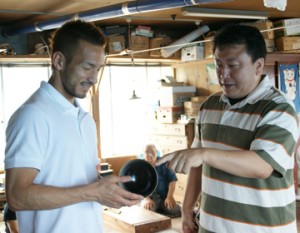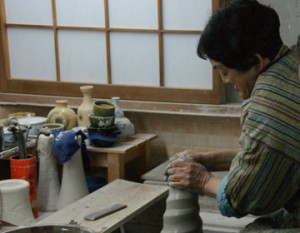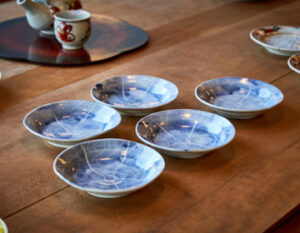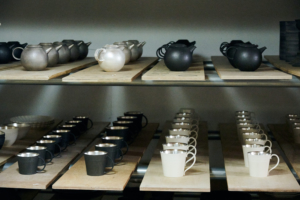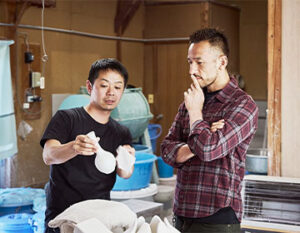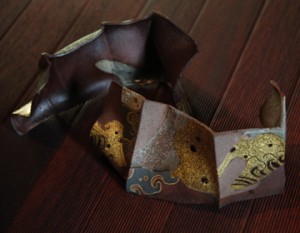Handmade porcelain
At the southern end of Matsuyama City, Ehime Prefecture, there is a town called Tobe (砥部). As the name kanji characters suggest, it is a town that used to be a production center of grinding stones. In the Edo period, porcelain were made using grinding stone powder as a raw material, and it developed into ”Tobe-yaki” porcelains. ”Tobe-yaki” was designated as a National Traditional Craft in 1976.
There are four types of ”Tobe-yaki”; white porcelain, indigo dyed works, celadon porcelain, and Tenmoku (iron glaze). We visited Shunjugama of Shoji Kudo, and there, the works are mainly white porcelain and indigo dyed works. Nakata had a try at the potter’s wheel to make a small plate.

Beyond ethnicity and history
Kudo has held many ceramic exhibitions at museums and galleries throughout the country, and his works has many fans. For example, a warm, white porcelain with a unique arabesque design. This is now a design representative of the modern ”Tobe-yaki”. The design was created about 20 years ago by Kudo, and it was inspired by the arabesque patterns seen at a museum in Iran.
Japanese tradition and foreign tradition – good things are connected across ethnicity and history.
The beautiful arabesque designs seems to embody Kudo’s idea that ”Civilization of craft is a measure of the era.”





